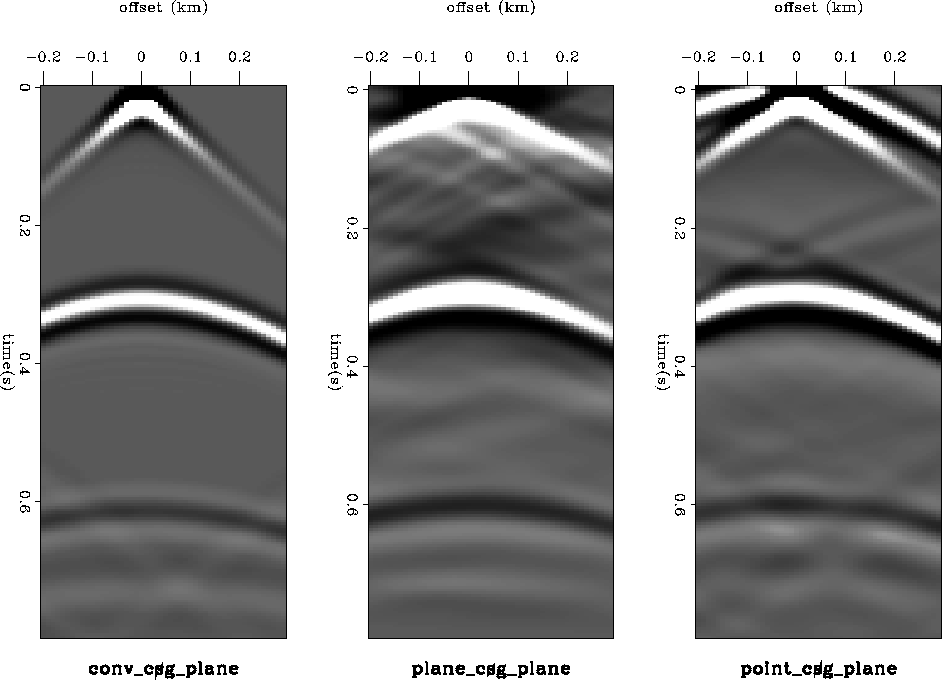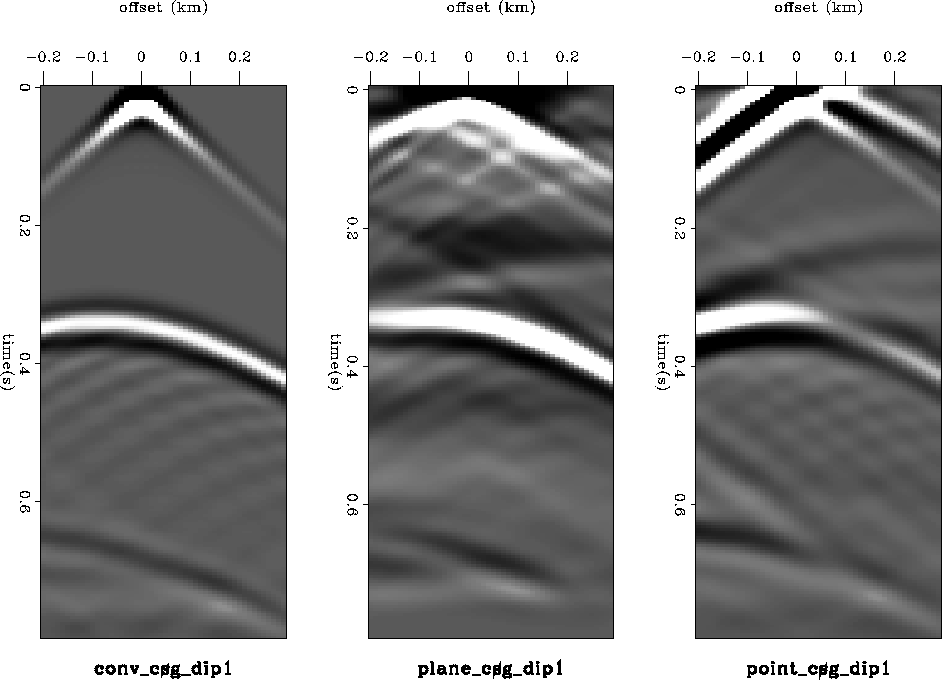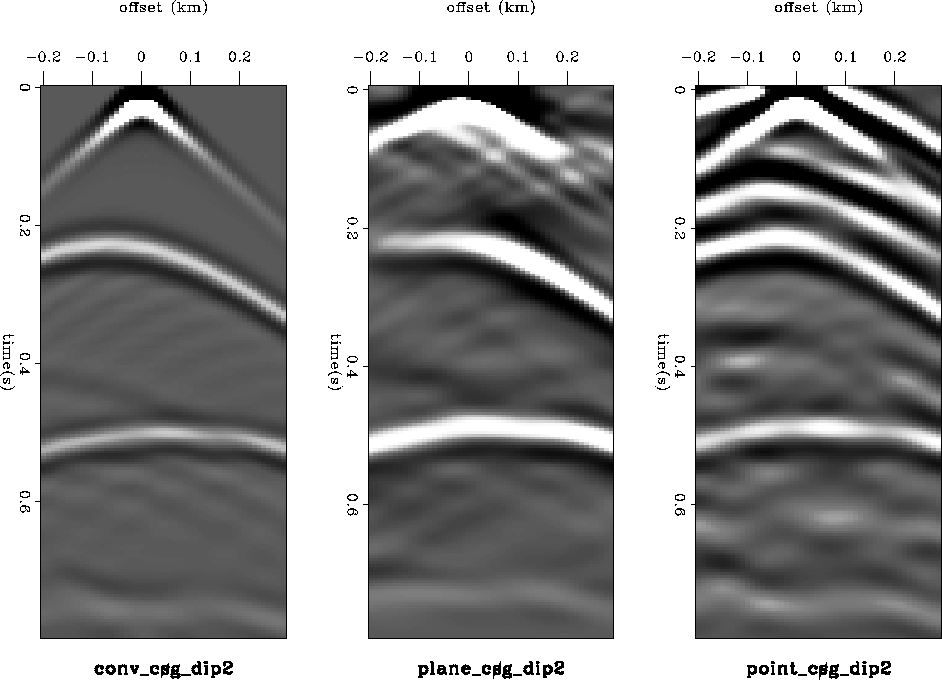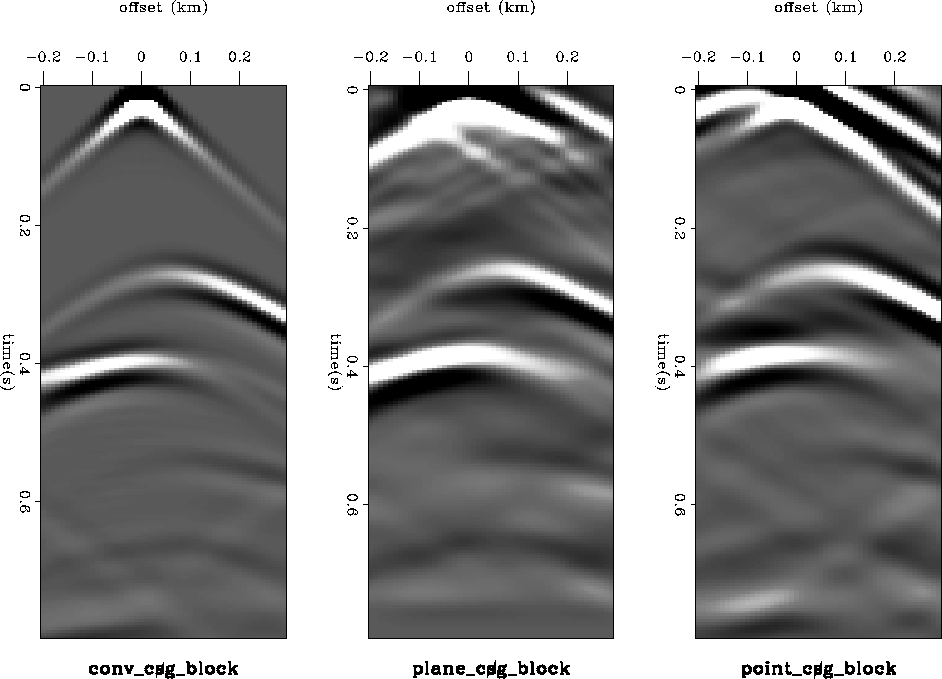




Next: WHITENING THE SLOWNESS SPECTRA
Up: Rickett: Imaging with ambient
Previous: Experiments
Common shot gathers constructed using the synthetic experiments
described above are shown in
Figures 6 to 9.
csg.plane
Figure 6
Common midpoint gathers over a single horizontal reflector. Left
panel: conventional finite-difference experiment. Center
panel: cross-correlation method with planar background noise.
Right panel: cross-correlation method with sources of the background
noise within the zone of interest.





csg.dip1
Figure 7
Common midpoint gathers over a single dipping reflector. Left panel
- conventional finite-difference experiment. Center
panel - cross-correlation method with planar background noise.
Right panel - cross-correlation method with sources of the background
noise within the zone of interest.





csg.dip2
Figure 8
Common midpoint gathers over two dipping reflectors. Left panel
- conventional finite-difference experiment. Center
panel - cross-correlation method with planar background noise.
Right panel - cross-correlation method with sources of the background
noise within the zone of interest.





csg.block
Figure 9
Common midpoint gathers over a fault block model. Left panel
- conventional finite-difference experiment. Center
panel - cross-correlation method with planar background noise.
Right panel - cross-correlation method with sources of the background
noise within the zone of interest.





Figures 6 and 7 shows common shot gathers
over Models 1 and 2, a single horizontal reflector and a single
dipping reflector. The left panels were generated by a conventional
finite difference experiment, while the middle and right panels
were generated by cross-correlating waves from below. The difference
between the middle and left panel is that the sources of the incoming
waves were at infinity for the middle panel, giving planar waves; and
within the zone of interest for the right panel, giving curved wavefronts.
The reflection events visible in the cross-correlation seismograms
seem to be consistent
with the conventional shot gathers to within the resolution of the
modeling; this true for both sources located within the zone of
interest as well as at infinity. The direct waves, however, are not
consistent with the conventional seismograms. This is due to the
factors discussed in the introduction and the lack of incident waves
with an apparent slowness equal to the slowness of the near surface
layer.
Common shot gathers modeled over Model 3 are shown in Figure 8.
Again the kinematics of the two reflections appear correct to within the
resolution of the modeling, for both plane wave and point sources of
ambient noise. However, in the point source case (right panel), an
extra event appears at 0.15 s travel-time. This is a corresponds to
the primary reflection from the event below the sources (see
Figure 10). This event is coherent in this example because the
point source were all situated at the same depth of 0.3 km. If the point
source had been located at random depths then this event would not have been
coherent.
belowref
Figure 10
Reflection from below source that causes extra event in common shot
gather created by cross-correlation.
|
| 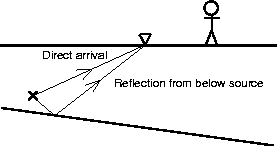 |

The shot gathers for the fault block model are shown in
Figure 9; and zero-offset sections of this model, created by
auto-correlating noise traces, are shown in Figure 11.
Again the kinematics are consistent to within the
resolution of the experiment. Diffractions can even be seen from the
edge of the fault.
zsec.block
Figure 11
Zero-offset sections of fault block model generated by cross-correlation
method. Left panel: sources of ambient noise at infinity. Right panel:
sources of ambient noise within zone of interest.
|
| 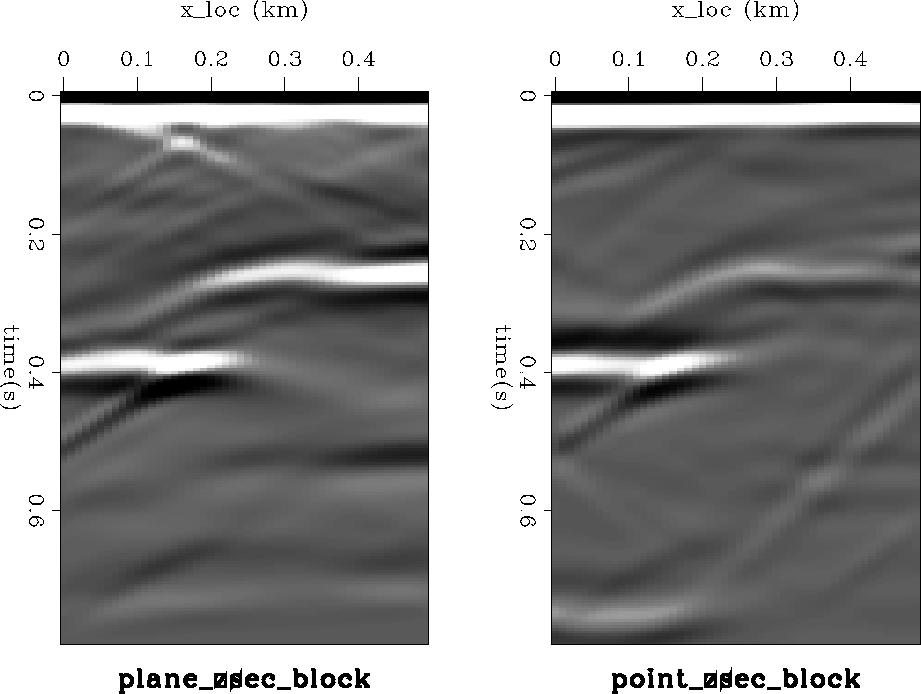 |





Another point that can be seen in the Figures is that
the bandwidth of the cross-correlation seismograms is comparable
to the bandwidth of the conventional seismograms. This implies that the
resolution we may expect from field data is governed by the bandwidth of the
ambient noise, not by the length of the time series that are cross-correlated.





Next: WHITENING THE SLOWNESS SPECTRA
Up: Rickett: Imaging with ambient
Previous: Experiments
Stanford Exploration Project
11/11/1997
